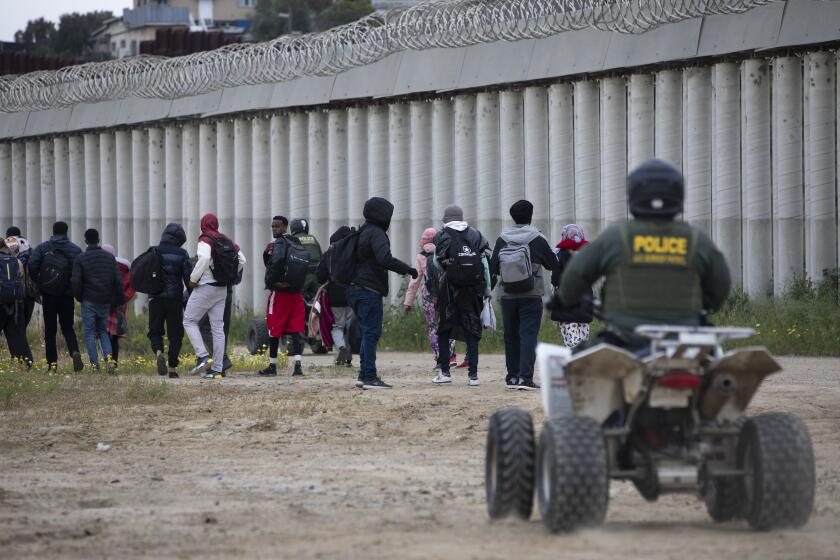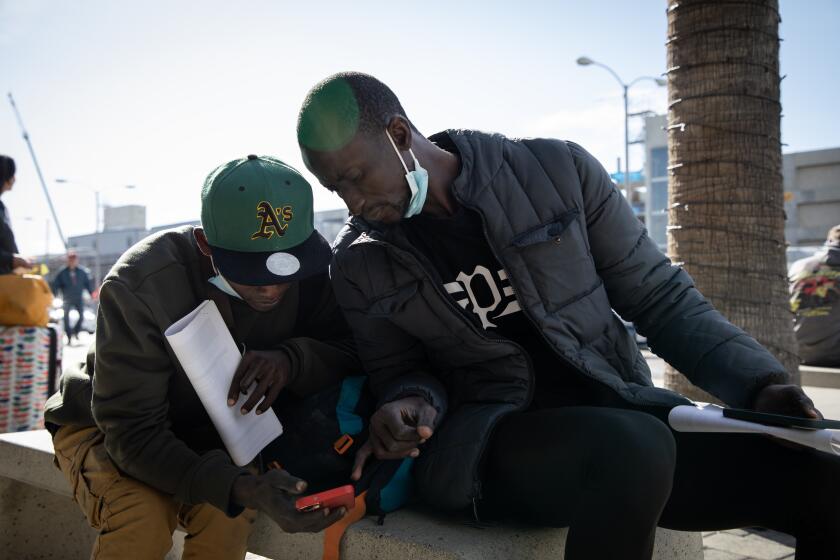Border apprehensions reached decade-high in March
The number of people caught crossing the southwest border illegally again rose dramatically in March, reaching a level not seen in more than a decade.
Border Patrol agents apprehended more than 92,600 people last month, the most in a single month since April 2007 when agents caught 104,465, according to data from Customs and Border Protection. It’s also a 148 percent increase from March 2018 when nearly 37,800 people were caught crossing the border illegally.
Meanwhile, the number of people who came to ports of entry without valid documentation to be in the U.S. dropped compared with the previous March. Port officials determined that more than 10,800 such travelers, known to CBP as “inadmissibles,” came to ports in March 2019. More than 12,900 inadmissibles presented at ports of entry in March 2018.
The Trump administration evaluates the sum of these arrivals each month — more than 103,000 in March 2019 — to talk about what it has repeatedly referred to as a border crisis.
“We’ve arrived at a breaking point,” said Brian Hastings, chief of law enforcement operations for Border Patrol, in a call with reporters to discuss March’s numbers.
Hastings stressed on Tuesday that Border Patrol agents are overwhelmed by the numbers of people, particularly families, that they are having to process. He worried about shifting agents away from duties on the border itself to care for and process those in its custody.

About 57 percent of those caught by Border Patrol were members of families traveling together.
Hastings said that word has spread over social media that migrants traveling with their children will be released into the U.S.
“The only way to change the trend is to change the message that if you bring a child, you’ll be allowed into our country,” Hastings said.
Federal officials have repeatedly encouraged asylum seekers to present at ports of entry as inadmissibles rather than crossing illegally.
The number of inadmissibles arriving at ports of entry has remained fairly consistent in large part because federal officials implemented a policy called “metering” which allows port officials to determine how many inadmissibles they will accept each day. If there are more people waiting than they will accept, those migrants end up waiting in Mexico for a turn to ask to come into the U.S.
There are currently more than 4,400 people waiting in Tijuana. That’s about 40 percent more than the number of inadmissibles processed along the entire California border in March.
Advocates, and even a report from the Office of the Inspector General for the Department of Homeland Security, have said that metering causes more asylum seekers to choose to cross illegally, where they often wait to surrender themselves to Border Patrol.
A growing percentage of families have chosen to cross the border illegally rather than come to ports of entry. In March 2019, about 7 percent of families came to ports of entry, and the other 93 percent were caught by Border Patrol.
A year ago, in March 2018, about 37 percent of families came to ports of entry while 63 percent were caught crossing illegally.
Because of the pressure on Border Patrol agents, CBP has sent field officers from its ports of entry to help process those caught crossing the border. Currently about 545 officers have been redirected, according to Randy Howe, executive director of operations for the Office of Field Operations at CBP.
Howe said 51 of those officers are from the San Diego Field Office, which is responsible for all of the ports along the California border. Another 300 are from the Laredo Field Office, and 194 are from the El Paso Field Office.
The loss of resources at the ports of entry has backlogged cargo processing at ports of entry, Howe said.
At the Otay Mesa Port of Entry in the San Diego area, Howe said, the line of trucks to cross on Monday had a wait time of about four and a half hours. On the same day last year, trucks waited about 15 minutes.
He also said that 175 trucks were unable to be processed on Monday because of the wait times.
Border crossings into California have mirrored the national trend, but at muted levels.
Agents apprehended more than 10,400 crossing into the state in March, a 54 percent increase from the nearly 6,800 caught a year ago. Nearly two-thirds of those migrants were caught in the San Diego Sector.
The sectors that have been struggling the most to keep pace with apprehensions, Hastings said, are the Rio Grande Valley, El Paso and Yuma.
One of the outcomes of that, Hastings said, is that people spend more time in Border Patrol custody than they used to because there is a processing backlog. Ideally, he said, the number of people in custody at any given point in time would be around 4,500 borderwide.
About two weeks ago, Hastings said, the agency had about 13,500 in its custody. Tuesday morning, he said, the count was about 10,000.
Get Essential San Diego, weekday mornings
Get top headlines from the Union-Tribune in your inbox weekday mornings, including top news, local, sports, business, entertainment and opinion.
You may occasionally receive promotional content from the San Diego Union-Tribune.









